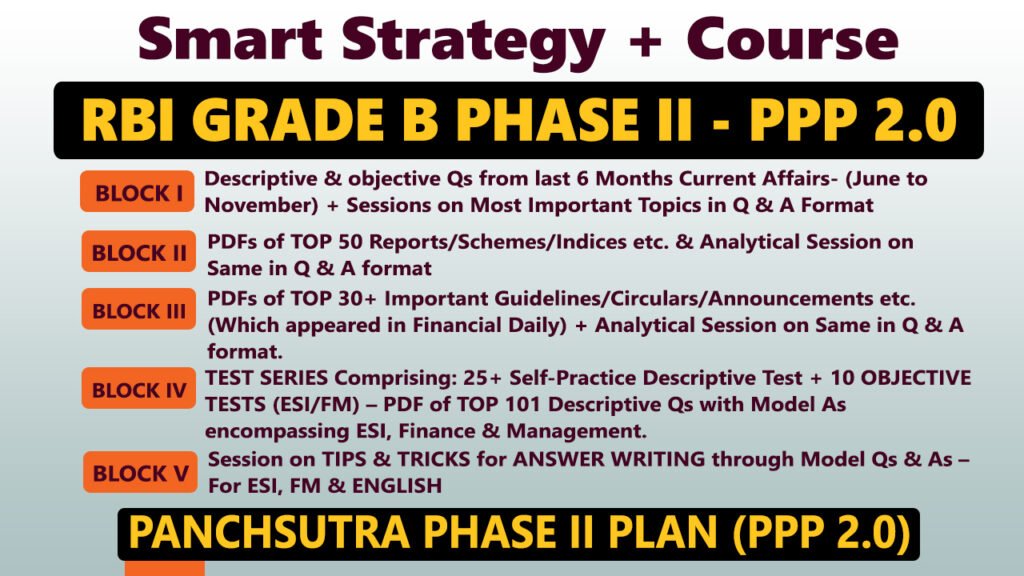Context:
- The Reserve Bank of India (RBI) conducted the 57th Monetary Policy Committee (MPC) meeting from 29 September – 1 October 2025.
- Policy stance: Neutral, keeping growth-supportive measures while monitoring inflation and external risks.
- Objective: Support domestic demand, maintain financial stability, and ensure orderly liquidity.
Policy Rates
| Instrument | Rate | Remarks |
|---|---|---|
| Repo Rate | 5.50% | Unchanged (second consecutive pause) |
| Reverse Repo (SDF) | 5.25% | By convention, 25 bps below repo |
| Bank Rate & MSF | 5.75% | No change |
- Cumulative rate cuts in 2025: 100 bps (Feb, Apr, Jun) from 6.5% → 5.5%.
Macro Outlook
GDP Growth (FY26)
- Revised upward to 6.8% from 6.5% in August projection.
- Quarterly forecast:
- Q1 FY26: 7.8%
- Q2 FY26: 7.0%
- Q3 FY26: 6.4%
- Q4 FY26: 6.2%
- Q1 FY27: 6.4%
- Drivers: Strong consumption, investment, government spending, good monsoon, GST rationalisation, and rising capacity utilisation.
CPI Inflation (FY26)
- Revised downward to 2.6% from 3.1%.
- Quarterly forecast:
- Q1 FY26: 4.5%
- Q2 FY26: 1.8%
- Q3 FY26: 1.8%
- Q4 FY26: 4.0%
- Factors: Food disinflation, mild fuel inflation, GST rationalisation, favourable base effects.
External Sector
- Current Account Deficit (CAD): 0.2% of GDP in Q1 FY26 (down from 0.9% last year).
- Services exports: double-digit growth; remittances: US$35.3 billion.
- Merchandise exports: +2.5%, imports: +2.1% (April–August 2025).
- FDI inflows: US$37.7 billion (April–July 2025).
Key Regulatory & Structural Announcements
- Banking & Risk Management
- ECL Framework: Forward-looking provisioning for all scheduled commercial banks from April 1, 2027.
- Basel III Norms: Revised capital framework effective April 1, 2027.
- Risk-Based Insurance Premium: Differential insurance premium for banks based on risk profile.
- Group Entities Regulation: Remove restrictions on overlaps between banks and group entities.
- Credit Flow & Capital Market Lending
- Removal of ceiling on lending against listed debt securities.
- Lending against shares limit raised from ₹20 lakh → ₹1 crore per person.
- IPO financing limit raised from ₹10 lakh → ₹25 lakh per person.
- NBFC lending to high-quality infrastructure: lower risk weights.
- Credit limit thresholds for large borrowers revised.
- External / FX & Ease of Doing Business
- Rationalisation of ECB/FEMA rules (borrowers, lenders, end-use norms, reporting).
- Exporters’ FCY repatriation extended: 1 → 3 months.
- Merchanting trade repatriation extended: 4 → 6 months.
- Promote INR cross-border transactions with Bhutan, Nepal, Sri Lanka.
- Financial Inclusion & Consumer Protection
- Strengthen Basic Savings Bank Deposit (BSBD) accounts.
- Revise RBI Ombudsman Scheme, including rural cooperative banks.
- Strengthen Internal Ombudsman mechanisms in regulated entities.
- Acquisition financing:
- Banks now allowed to finance mergers & acquisitions (M&A) of Indian companies, addressing a long-standing demand.
- Credit exposure liberalisation:
- Limit on lending to large corporates removed, previously capped under the 2016 circular.
- RBI to monitor system-level concentration risk rather than individual banks.
- Collateral and credit limits:
- Increased loan limits against shares, REITs, InvITs.
- Ceiling removed on loans against listed debt securities.
- Higher limits for financing IPOs and loans against shares for individuals.
Implications
For the Economy:
- Growth-supportive stance encourages investment and consumption.
- Lower inflation maintains purchasing power and real rates.
- External stability (CAD narrowing) supports rupee and financial markets.
For Banks & Financial Institutions:
- ECL and Basel III require stronger capital adequacy and risk management.
- Expanded capital market lending fosters market depth.
- Higher IPO financing supports retail and HNI participation.
For Borrowers & Investors:
- Loan EMIs stable due to unchanged repo.
- Real interest rates favorable amid lower inflation.
- Retail investors benefit from higher financing limits for shares and IPOs.
Key Terms for RBI Grade B / Exams
- Repo Rate: Rate at which RBI lends short-term funds to banks against government securities. Tool to control liquidity and inflation.
- Reverse Repo Rate: Rate at which RBI borrows from banks. Absorbs liquidity or encourages lending depending on level.
- ECL Framework: Forward-looking provisioning system; banks estimate expected credit losses.
- Basel III: International banking reforms to strengthen capital, liquidity, and leverage standards.
- CPI Inflation: Consumer Price Index; measures average change in prices of goods and services consumed by households.
- CAD (Current Account Deficit): Difference between imports & exports of goods, services, and net transfers.



















